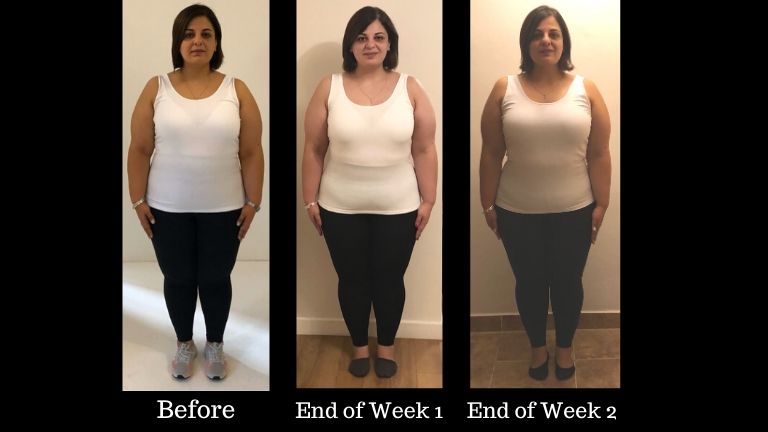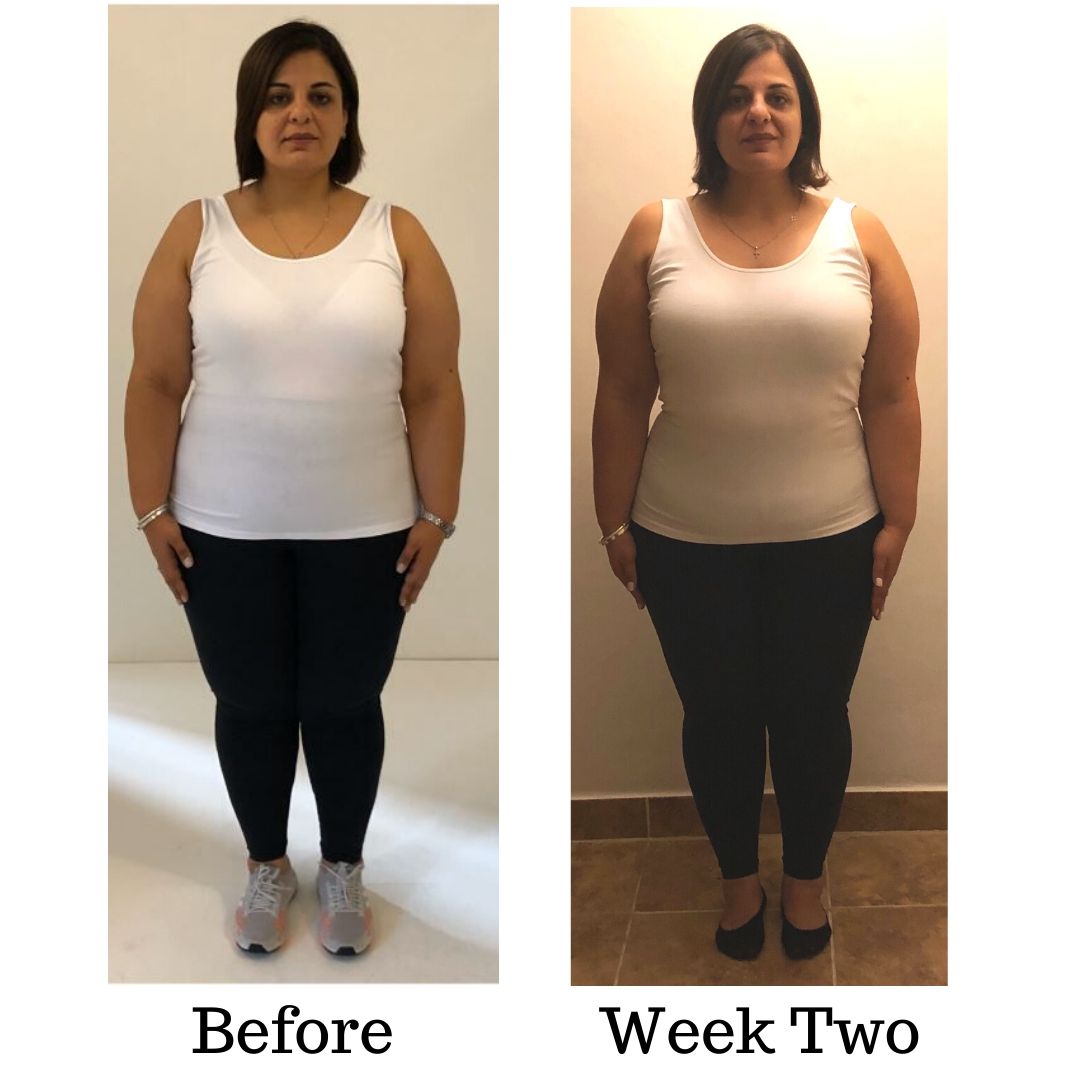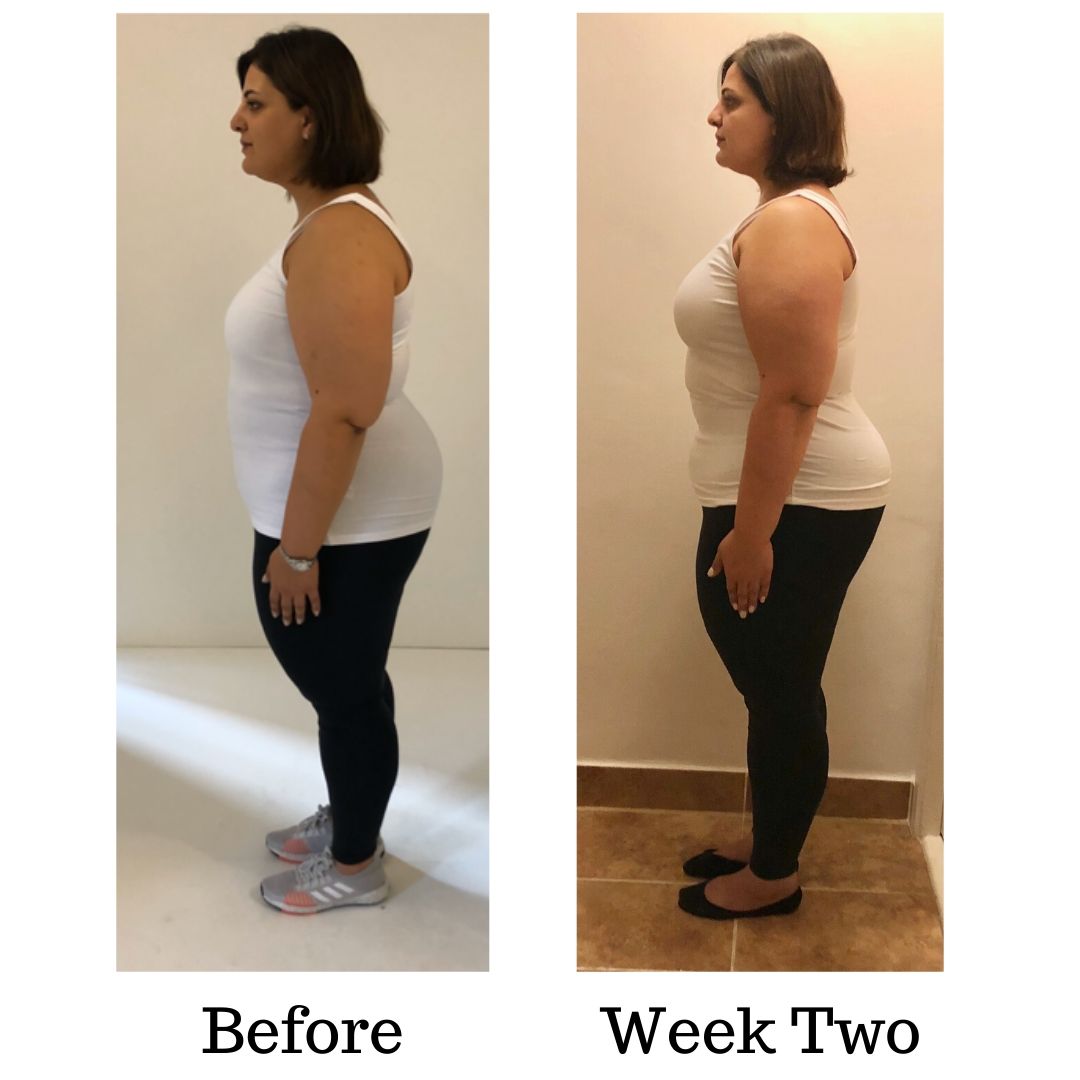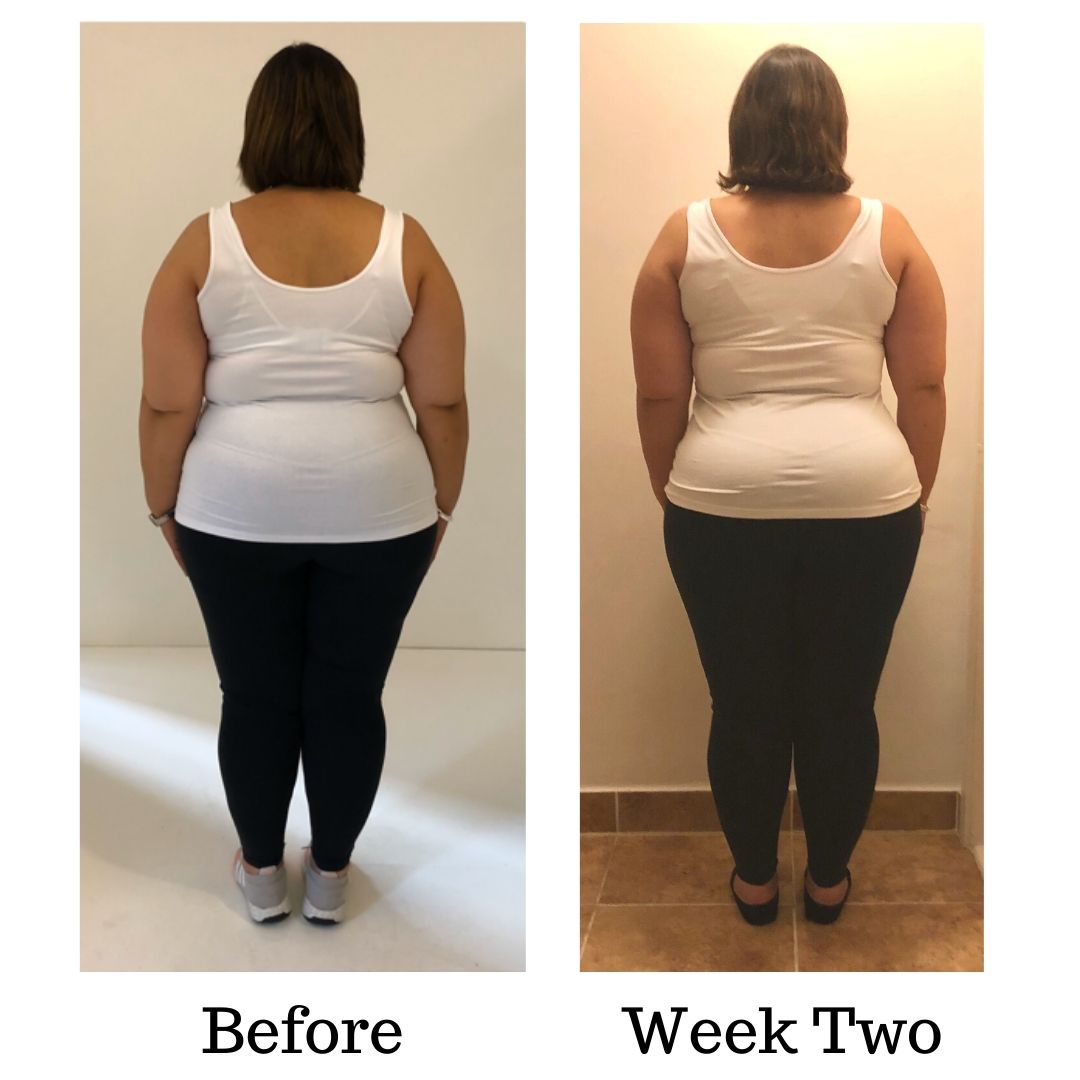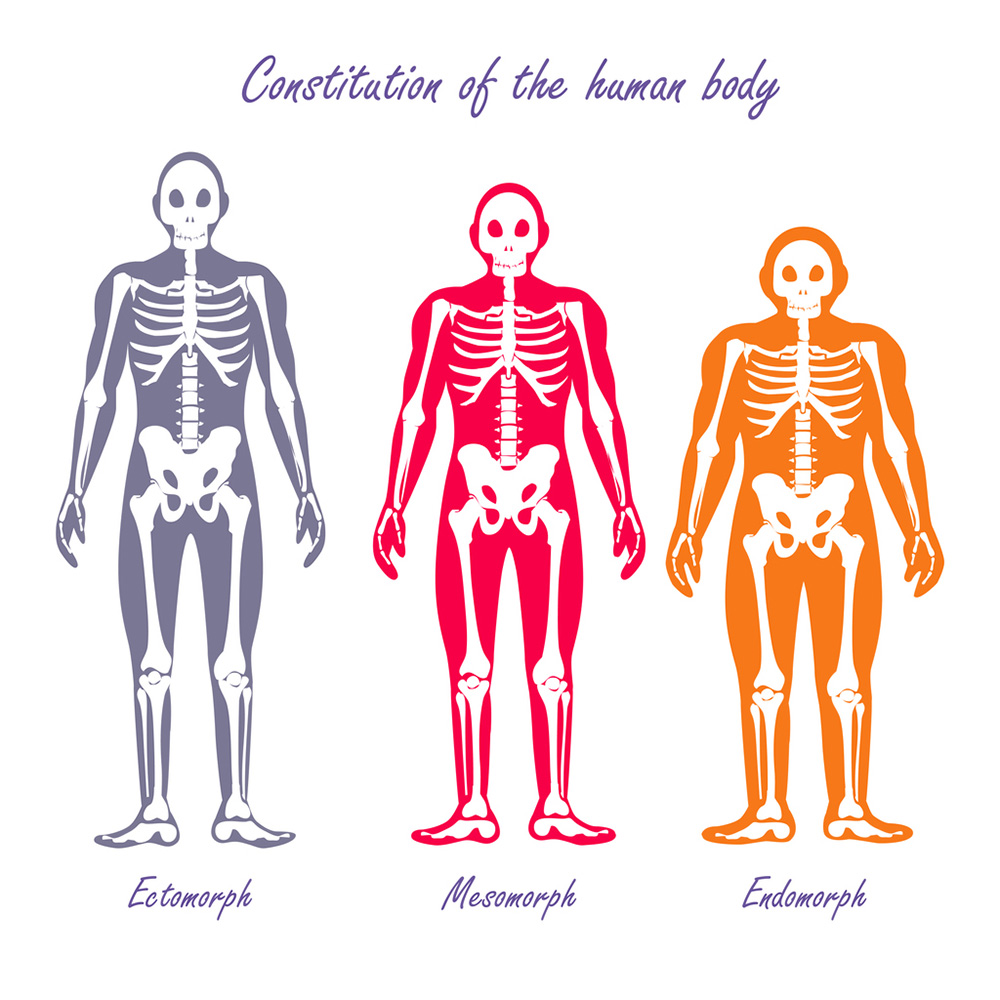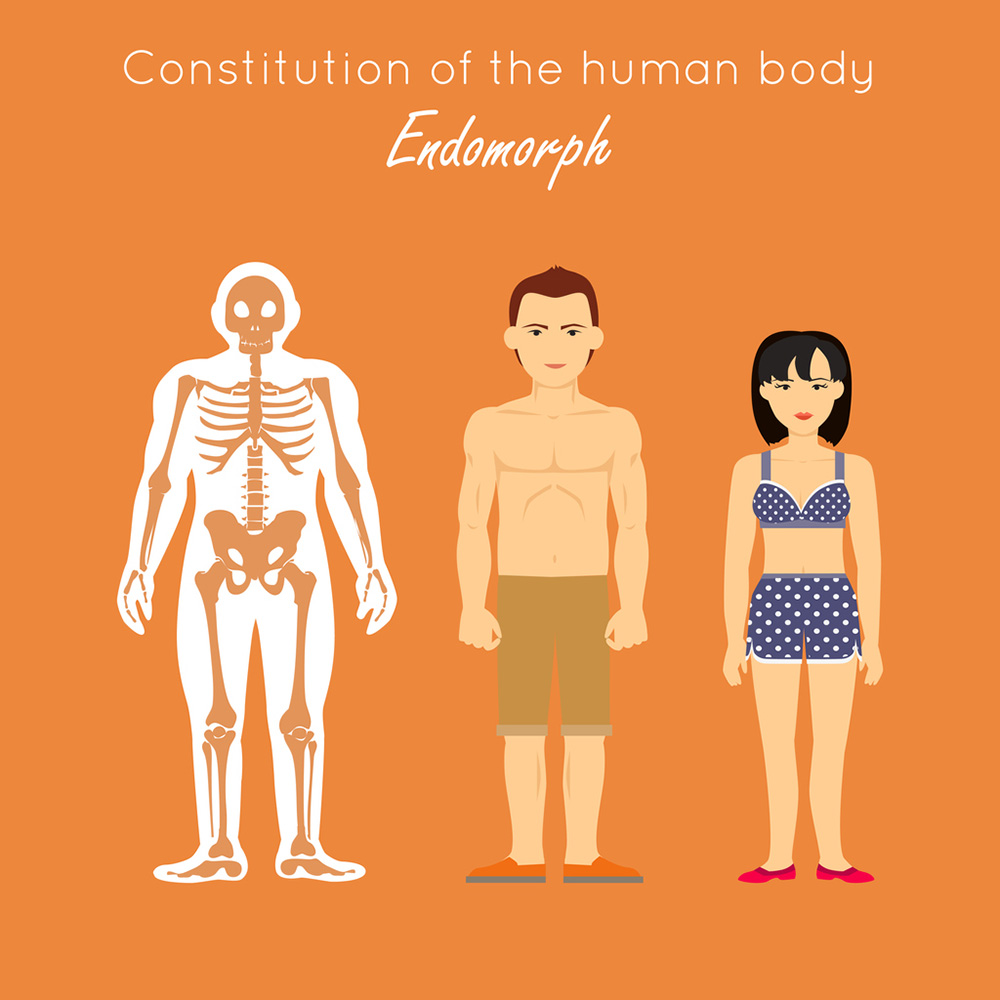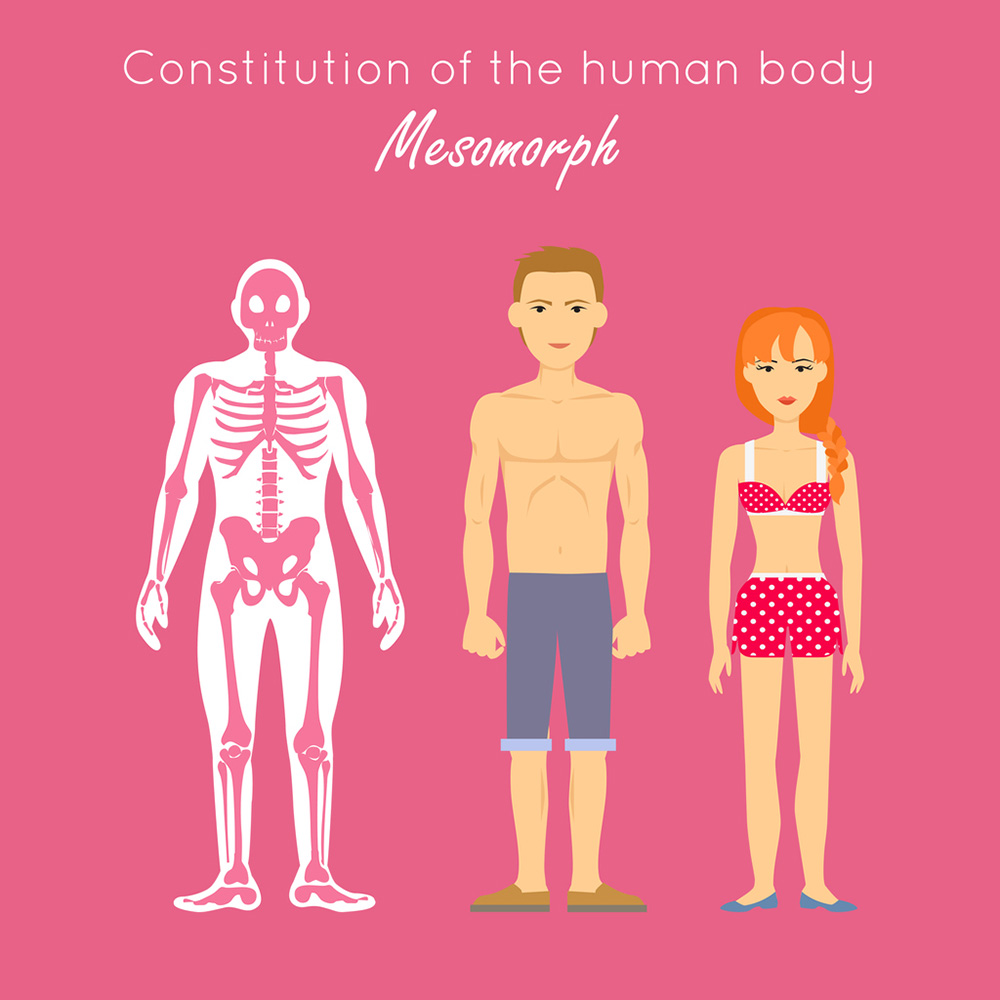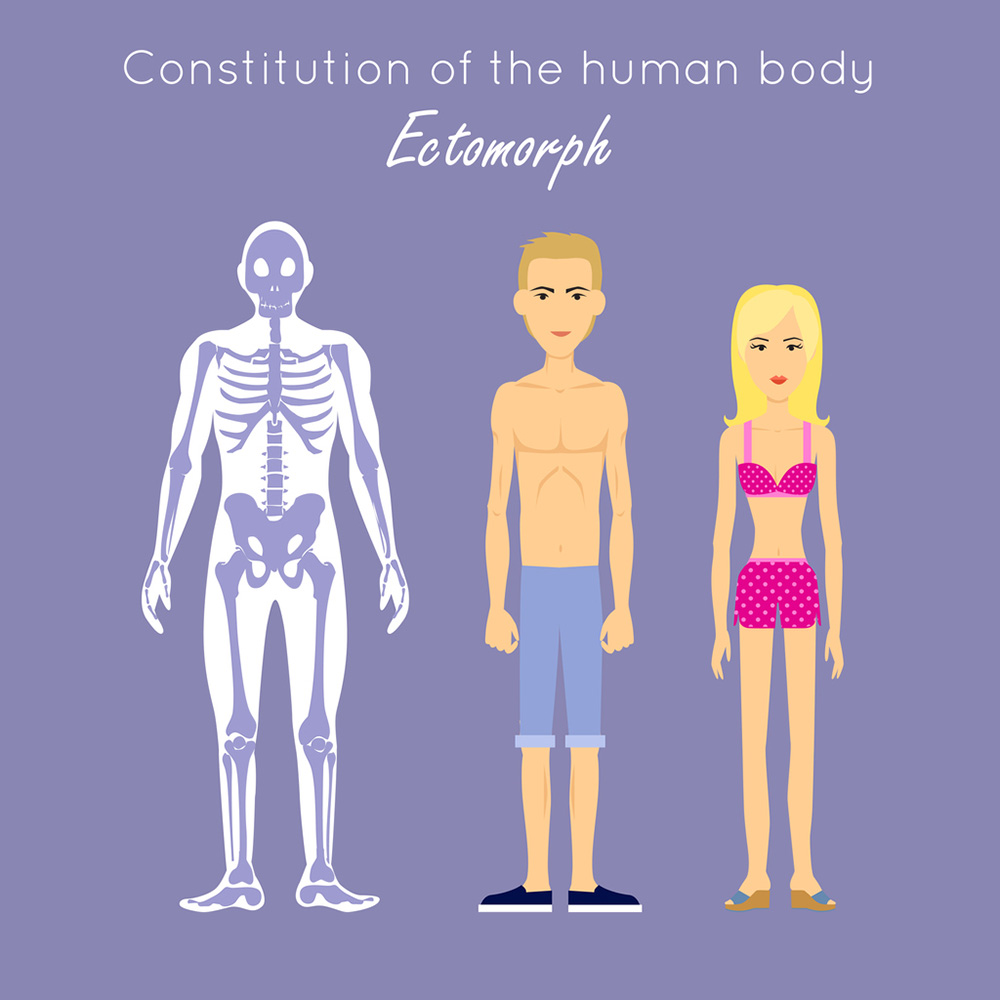It’s week three of Dina’s 10-week body transformation with Your Body Programme and she has already dropped four and a half kilos and lost over three inches
I have made it to week three of my 10 week weight-loss transformation and after losing four kilos by the end of my first week I was excited to see what the results would show at the end of week two.
But I have to be honest, I was slightly disappointed this week as I had only lost half a kilo…
| Before | End of Week 1 | End of Week 2 | |
| Weight (kg) | 120 | 116 | 115.5 |
| Chest (centimetres) | 118 | 116 | 115.5 |
| Waist (centimetres) | 115 | 114 | 113 |
| Hips (centimetres) | 141 | 139 | 137 |
| Total weight-loss | N/A | 4 | 4.5 |
I know that a loss is still a loss and at least it’s in the right direction. But after losing so much in the first week I was convinced I would lose at least two kilos this week, especially as I had really stuck to the diet and tried hard in my personal training sessions with founders of Your Body Programme, Terry Fairclough and Luisa Valenti.
Terry and Luisa have told me not to feel disheartened though. They are still pleased with me and reminded me that I was still on track because gradual weight loss is far more beneficial than rapid weight loss.
Plus, it isn’t all about what you see on the scales. Aside from the weight loss part of this journey, I still feel amazing. I am motivated and still look forward to my training sessions. I feel lighter and fitter during my sessions and my clothes are continuing to feel looser – so my body is clearly changing shape. The pictures show that for sure.
I feel lighter and fitter during my sessions and my clothes are continuing to feel looser
I also went to the gym – in the morning – for the first time ever! Which is a big deal for me, as I am always extremely tired in the AM. My colleagues even told me to quieten down because I was ‘annoyingly happy’, over-excited and spent the whole day on a high – thank you fitness endorphins.
As mentioned in the previous two articles, Your Body Programme focuses on individual body types and provides a personalised programme, with a workout plan and a nutrition plan that matches your specific body type in order for you to obtain the best weight loss results.
So, remember when reading my transformation journey, that what may work for me and my body type (an endomorph), may not work for you.
With that said, this week I wanted to guide you through what Terry has taught me about the different body types in the hope that you’ll be able to figure out what yours is.
Where does the term Body Type come from?
If you’re wondering where the whole different body-types theory came from, 70 years ago, American psychologist Dr. William Sheldon developed his now famous theory of the three somatotypes (body-types), based on many photographs and measurements of nude figures.
According to Sheldon, humans can be grouped into three different body types or somatotypes: ectomorph, mesomorph, and endomorph. Each type is said to have distinct physical and metabolic characteristics.
Nutritionists and fitness professionals, have used this theory on somatotypes for years to help them gain the upper hand when it comes to training and nutrition.
Understanding metabolism
Before going through the individual body types, it’s firstly important for us to learn an important factor that can change depending on your body type – metabolism.
Your metabolism is the speed at which your body converts the food you eat into energy.
There are many different factors that determine the rate at which your metabolism works: the amount of muscle you have, the number of calories you consume, eating or skipping breakfast, medication you are taking, your age, hormones, exercise and the type of exercise you do, your lifestyle habits as well as your body type.
Although there are factors (mentioned above) that will affect your metabolism, certain body types tend to have naturally slower or naturally faster metabolisms than others depending on the amount of muscle they have and how much fat they store.
In general, ectomorphs have very fast metabolisms, mesomorphs also have a fast metabolism, and endomorphs have a slower metabolism.
There are many different factors that determine the rate at which your metabolism works
In terms of evolution, we are programmed to hold onto fat reserves (some body types more than others) for times of famine and starvation.
Losing too much weight too fast may seem great at first, but over time the body will go into panic/starvation mode, thinking that we will starve and so will slow down our metabolism to prevent losing weight too quickly.
That is why it is important for different body types to increase or maintain muscle mass, and to increase or maintain or lose fat mass, in order to prevent a panic/starvation mode reaction.
With all that said, let’s find out what body type you are (and whether you have a fast or slow metabolism….)
What Body Type are you?
The best way to tell what body type you are is quite simply by looking in the mirror, but it’s important to be objective when evaluating yourself. Take a close look at your physique and at your body’s frame.
Are you long and lean? Maybe you’re an ectomorph. Broad and stocky? You could be an endomorph. Do you have proportional shoulders and hips? Perhaps you are a mesomorph.
Keep in mind that it’s not uncommon for people to have a blend of different body types (somatotypes) In fact, it’s quite rare for someone to have all the characteristics of just one somatotype.
Endomorph (that’s the same as me)
So let’s start with my body-type, the endomproh, I mentioned a bit about this particular body type in week one.
Signs you are an Endomorph:
- Smooth, round appearance, can be described as plump or big-boned.
- Narrow shoulders and wider hips.
- Medium to large bone structure with thick-looking joints.
- Limbs can often appear short.
- Female endomorphs display more of a pear-shaped figure, with a more feminine body.
- Are full figured, curvaceous with wider hips than shoulders.
- Famous female endomorph bodies include Marilyn Monroe and Serena Williams.
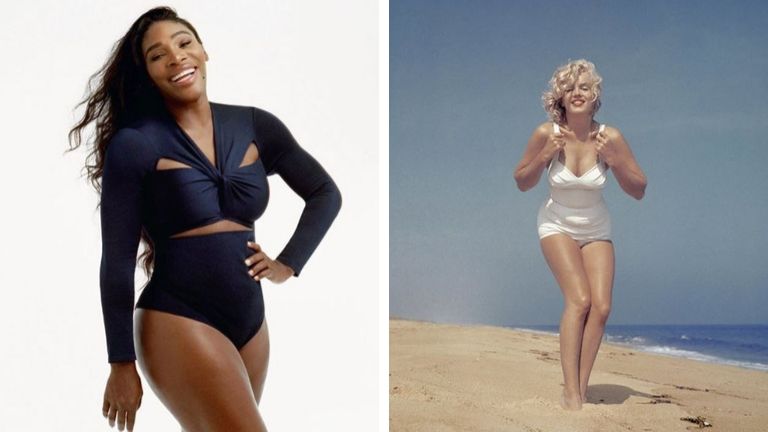
Natural tendencies:
- Endomorphs have a slower metabolism, which can contribute to unwanted weight gain.
- They are susceptible to fat storing, especially when they don’t train frequently or correctly.
- Muscle can be hidden under a layer of fat, causing them to appear as if they have little muscle definition when in fact they are muscular.
- Are good at sports that require agility, strength and speed.
- Excel at powerful explosive sports rather than endurance training.
- Tend to put on fat easier than other body types.
- Endomorphs have the slowest metabolic rate of all the body types.
- Do not tolerate carbohydrates well (not that they should be avoided completely of course).
- Endomorphs have lots of muscle already and tend to hold on to it easily.
- They also can build muscle easily.
What to do:
- Cardio, cardio and more cardio – the more towards the Endomorph body type you are the more cardio you will have to do. (I do three cardio sessions a week which is the amount advised).
- Cut down your daily calories, to avoid excess fat storage.
- Keeps carbohydrate intake under control, as endomorphs store fat easily.
- Building muscle shouldn’t be a priority as they are already have a higher muscle mass, keeping fat percentage down is more important.
- Focus on compound exercises (exercises that use big muscle groups, such as squats, deadlifts and push ups).
- Keep the intensity up during training to create the correct hormonal response (boosting human growth hormone and testosterone). That means you should be out of breath whilst training.
- Spend no longer than 80 minutes training, to prevent protein breakdown when glycogen (stored carbohydrate) is depleted.
- Trying HIIT (high intensity interval training), mixed with some steady state cardio, is a great option for this body type.
- An Endomorph should eat fewer meals as they have good fasting tolerance.
- Having gaps between meals will allow the insulin levels to fall, which will increase their rate of fat burning.
Does this body type sound like you? Now you need to workout out your calorie and macro needs using this calculator.
Mesomorph
Signs you are a Mesomorph:
- Mesomorphs are inherently muscular with strong legs and arms.
- Have a naturally athletic appearance and can look like an athlete even without training.
- Naturally lean, muscular and sporty-looking.
- Medium-sized bone structure, large muscles and are generally in proportion.
- Fairly broad shoulders and narrow waists.
- Famous female mesomorph bodies include Denise Lewis and Madonna.

Natural tendencies:
- Mesomorph’s have a faster metabolism that helps them to regulate their body weight.
- Take well to physical activity and are natural athletes.
- Gain muscle and lose fat relatively quickly.
- Find it easy to maintain a low body fat percentage.
- Tend to lose weight, build muscle and tone very quickly when on the correct exercise and nutrition plan.
- Can tolerate carbohydrates although the amount will depend on their goal and daily physical activity level.
What to do:
- Have an equal balance between cardio and weights training sessions.
- To gain muscle – focus more on weight based training.
- For fat loss – lean towards more cardio sessions.
- Advisable to increase muscle where you can, in order to help keep your metabolism firing.
- Too muscular? Don’t drop the weights or the intensity, simply change the cardio to resistance ratio by swapping a resistance session for a cardio one.
- Focus on compound exercises (exercises that use big muscle groups, such as squats, deadlifts and push ups).
- Keep the intensity up during training to create the correct hormonal response (boosting human growth hormone and testosterone). That means you should be out of breath whilst training.
- Spend no more than an hour training, to prevent a catabolic environment and protein breakdown when glycogen (stored carbohydrate) is depleted.
- Try HIIT (high intensity interval training) mixed with some steady state cardio.
- HIIT helps to increase mitochondria (where fuel is burnt to produce energy). The more mitochondria you have, the more fat you can burn.
- HIIT will also have the effect of increasing your metabolism, which results in burning more calories over the next 24 to 36 hours.
- Keep up the frequency of your training sessions, try not to have than more than one consecutive day off.
- For fat loss have four to five meals a day.
- For muscle gain have five to six meals a day.
Does this body type sound like you? Now you need to workout out your calorie and macro needs using this calculator.
Ectomorph
The stereotypical catwalk models of the 80’s and 90’s are good examples of an ectomorph body type.
Signs you are an Ectomorph:
- Have a quick metabolism that makes it challenging for them to gain weight, both in the form of muscle and fat.
- Ectomorphs appear long and lean.
- Have a narrow chest and shoulders.
- Can look wiry or willowy.
- Can sometimes have a narrow waist and hips.
- Tend to have small joints and a light bone structure.
- Female ectomorphs tend to lack feminine curves, are often flat chested and have a straighter physique.
- Famous ectomorph bodies include Natalie Portman and Kate Moss.

Natural tendencies:
- Will struggle to build and maintain muscle.
- Ectomorphs have fast metabolisms.
- In a healthy ectomorph a high metabolism results in the body storing minimal fat, it increases protein turnover, which speeds up recovery.
- An untrained ectomorph will have a low muscle tone.
- Have high levels of the digestive enzyme amylase which breaks down carbohydrates, making them carbohydrate tolerant (So basically they can eat carbs (the right carbs) without the associated fat gain – lucky them!)
What to do:
- An Ectomorph exercise plan should consist of resistance training rather than too much cardio and their priority should be building muscle.
- Do not cut down on calories, you need to hold onto and grow muscle as much as possible.
- Eat small meals regularly to prevent depleting glycogen stores which can break down muscle.
- Have a steady stream of food going to keep insulin levels steady, to prevent protein breakdown.
- Keep glycogen stores (carbohydrate stored in muscle) topped up.
- Focus on compound exercises (exercises that use big muscle groups, such as squats, deadlifts and push ups).
- Keep the intensity up during training to create the correct hormonal response (boosting human growth hormone and testosterone).
- Exercise should not last longer than 45 minutes, to prevent protein breakdown when glycogen (stored carbohydrate) is depleted.
- HIIT (high intensity interval training) should be avoided, as working at such a high intensity too often may breakdown muscle as the body cannot utilise fat at such high intensities.
Does this body type sound like you? Now you need to workout out your calorie and macro needs using this calculator.
Workout of the week:
Six different exercises, 45 seconds each exercise with 15 seconds rest between each exercise. This I did four times.
Squat jumps 45, seconds. Rest, 15 seconds,
Push ups, 45 seconds. Rest, 15 seconds,
Kettlebell deadlifts, 45 seconds. Rest, 15 seconds,
Mountain climbers, 45 seconds. Rest, 15 seconds,
Alternating lunges, 45 seconds. Rest, 15 seconds,
Sit ups, 45 seconds. Rest, 2 minutes.
Repeat three more times.
Come back every week to read Dina’s week by week diary of her weight loss transformation with Terry and Luisa from Your Body Programme, with tips and advice from the experts.
Your Body Programme was founded by Terry Fairclough and Luisa Valenti.
The idea came about after Terry and Luisa saw other personal trainers regularly offering the same generic plan to every client, regardless of gender, goal or body type.
Terry and Luisa are passionate about the need to train everyone as an individual to achieve maximum results, and therefore don’t use a one-size-fits-all approach.
Relevant Healthista Content:
I did a body transformation and lost 11 inches – this is what REALLY works for fat loss
30 day transformation using a low calorie diet
Healthista Content You May Also Like:
7 best Golden Globe body transformations
9 diet rules this celebrity personal trainer lives by
Body transformation week one – operation FAT LOSS
5 fat loss supplements proven by science
Like this article? Sign up to our newsletter to get more articles like this delivered straight to your inbox.



